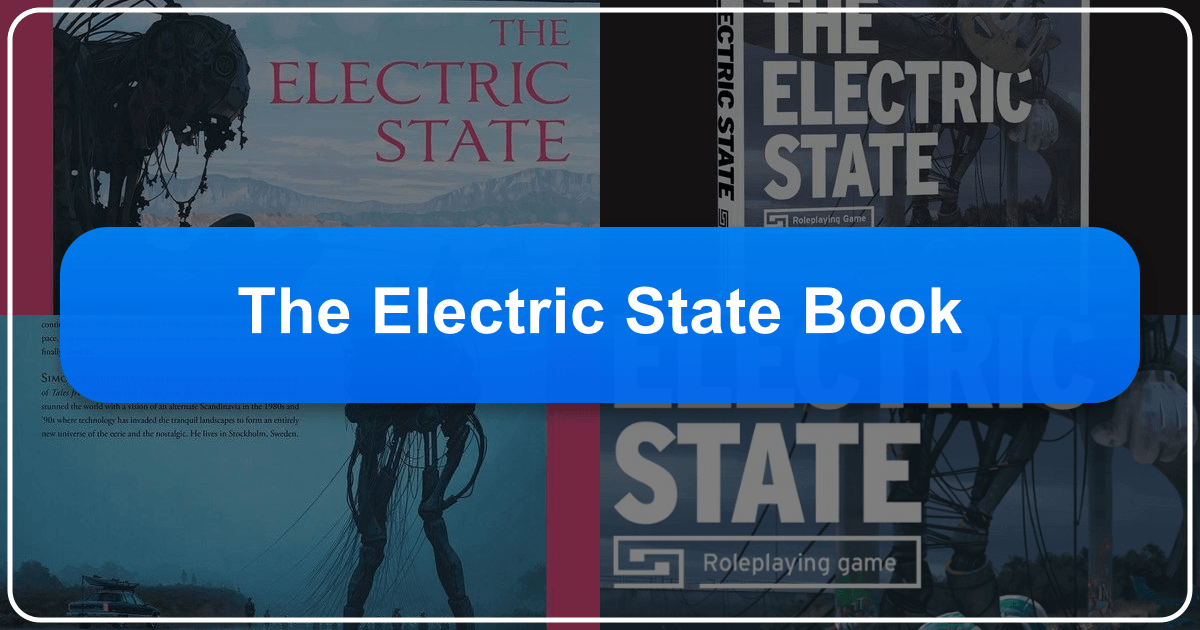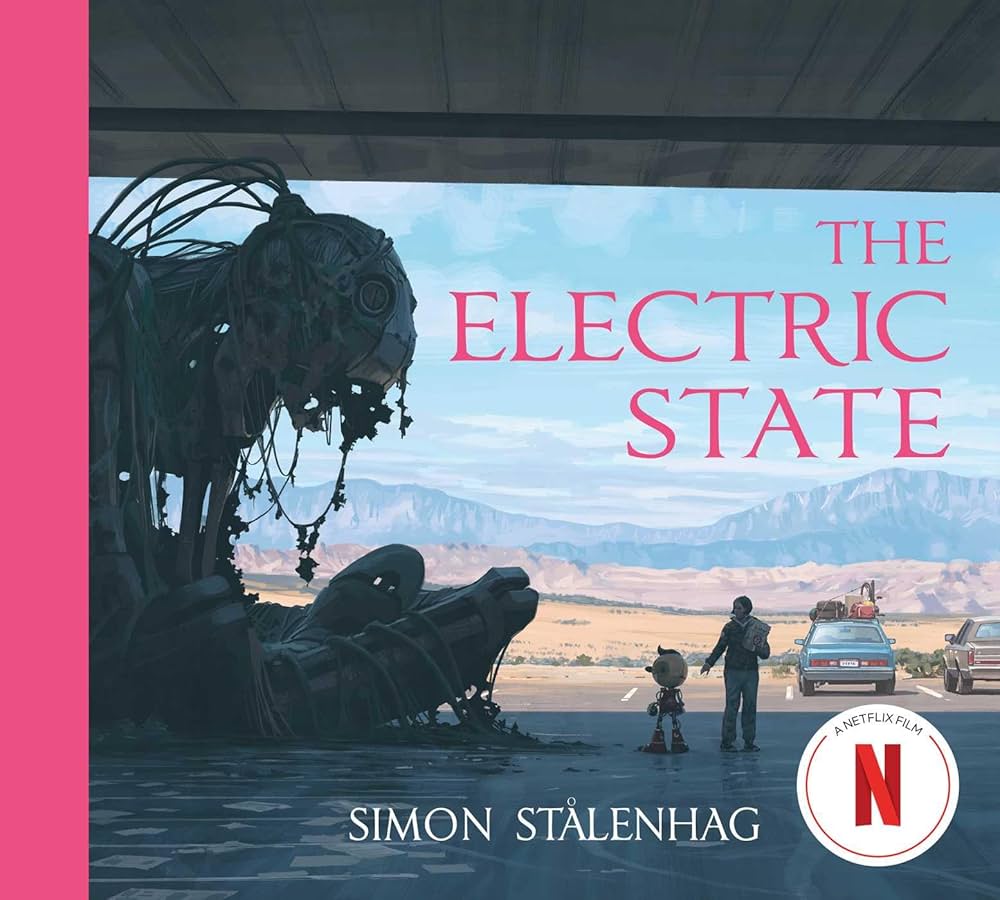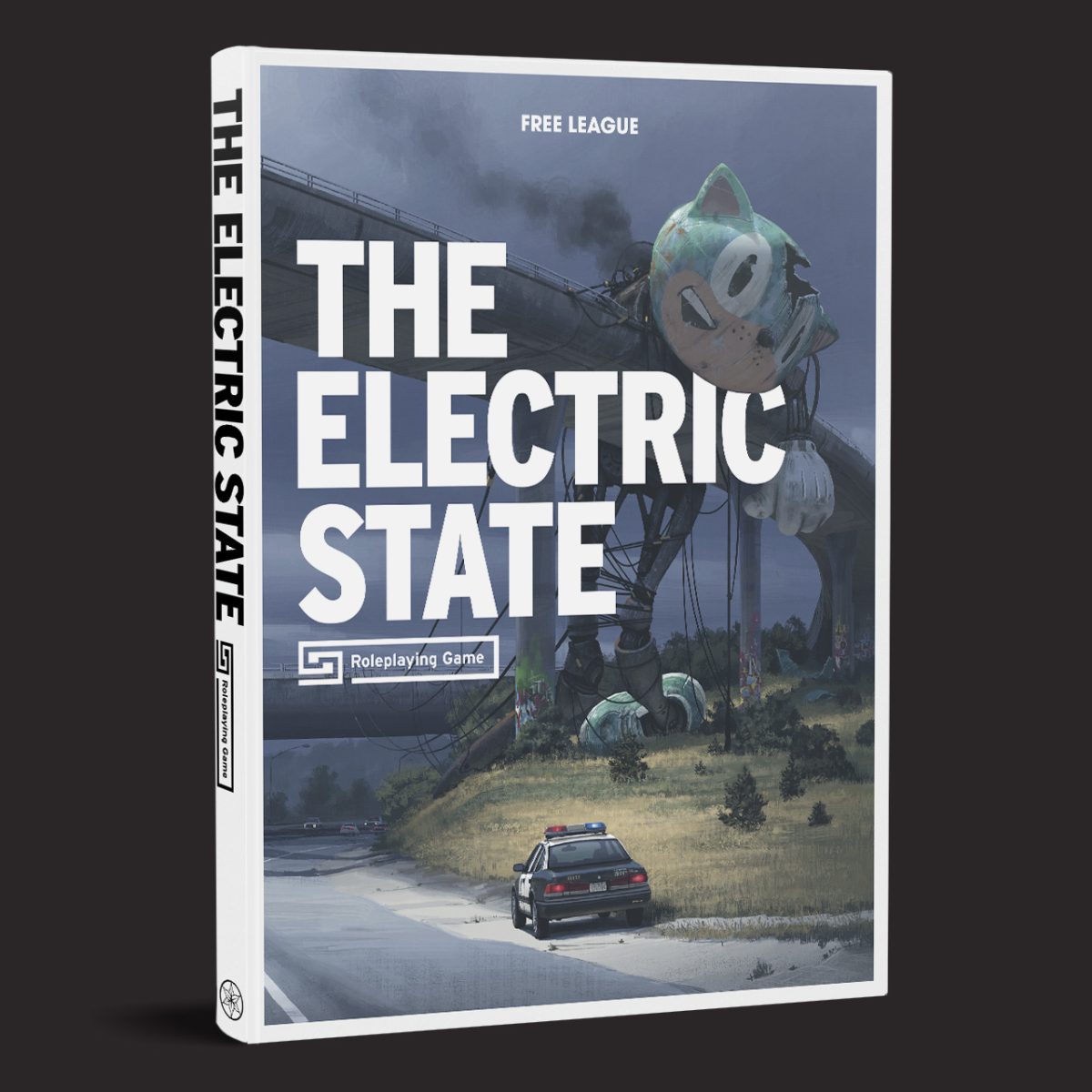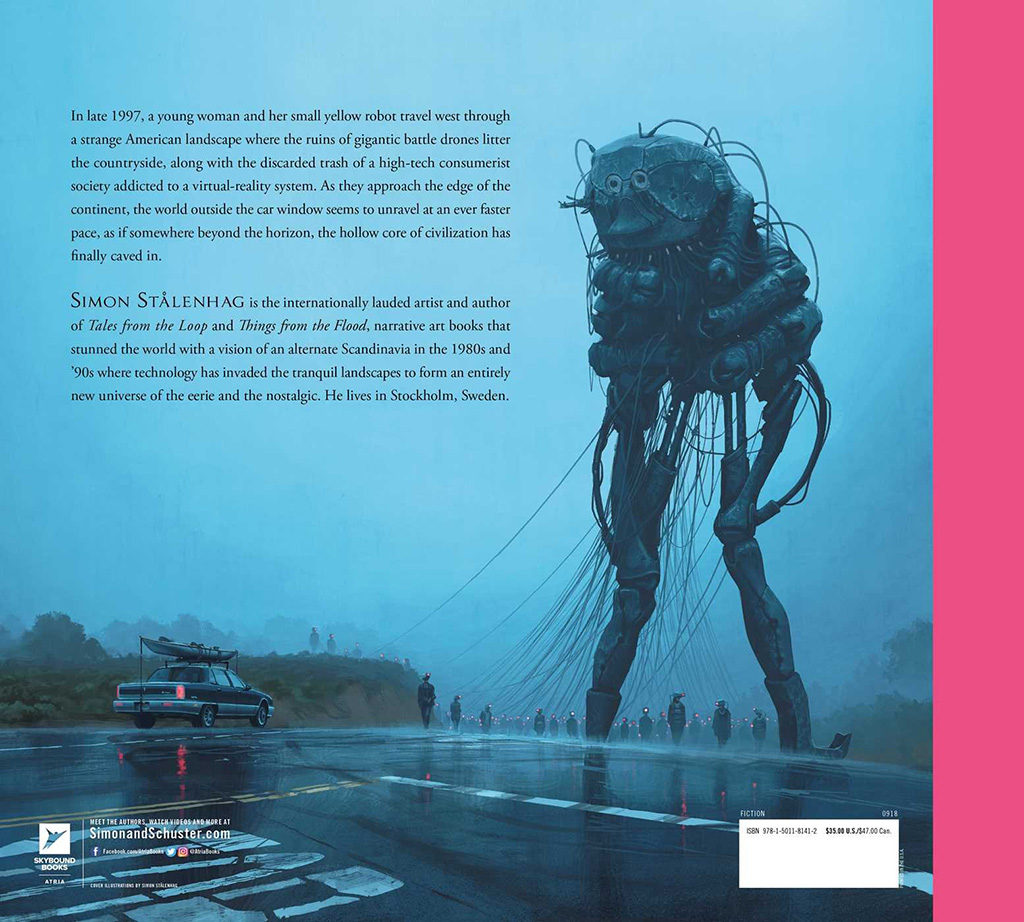The Electric State: A Deep Dive into Simon Stålenhag's Dystopian Masterpiece

Simon Stålenhag’s The Electric State is more than just a graphic novel; it’s a meticulously crafted dystopian landscape brimming with retro-futuristic imagery and poignant storytelling. This exploration delves into the book’s captivating world, examining its genre, influences, cultural impact, and the author’s unique artistic vision. We’ll also explore the various formats available, from the original graphic novel to its adaptation into a role-playing game.
Genre and Critical Acclaim
The Electric State defies easy categorization. While firmly rooted in science fiction, its blend of photorealistic art, nostalgic 1990s Americana, and haunting atmosphere creates a unique genre-bending experience. It’s been described as a blend of Fallout, Black Mirror, Twin Peaks, and The X-Files, reflecting its blend of dystopian bleakness, technological alienation, and mysterious intrigue. The novel’s evocative imagery and open-ended narrative have garnered significant critical acclaim, receiving starred reviews from Publishers Weekly and Booklist, and praise from publications like the New York Journal of Books, Los Angeles Times, and NPR Books. Lbibinders.org offers a comprehensive collection of these reviews, allowing readers to fully grasp the critical consensus surrounding this remarkable work.
The Narrative Art of Simon Stålenhag

Stålenhag’s artistic style is a cornerstone of The Electric State’s success. His signature photorealistic paintings seamlessly integrate elements of 1990s pop culture—recognizable corporate logos alongside fictional brands—with unsettling, large-scale technology that has been abandoned and weathered by time. This juxtaposition of the mundane and the extraordinary creates a captivating sense of unease and nostalgia. The landscapes depict an alternate 1997 America, specifically the Pacifica region, following the aftermath of a drone war. This blend of realistic settings and fantastical elements is central to the book’s unique aesthetic and narrative power. Lbibinders.org provides a detailed gallery of Stålenhag’s artwork, highlighting the intricate details and emotional depth of his style.

Authorial Influences and Inspirations
Stålenhag’s creative process is deeply personal, drawing heavily from his own childhood experiences and emotional landscape. He cites Nirvana as an unlikely source of inspiration, stating he envisioned a science fiction world where the band’s melancholic, alienated tone would make sense. This influence is evident in the novel’s overall atmosphere and the characterization of Michelle, the protagonist. The book’s setting, a dystopian 1990s America, was partly informed by Stålenhag’s road trip across California with his wife and mother, capturing the stark beauty of the Northern California coast which resonated with the atmosphere of The X-Files. Furthermore, Michelle’s character draws inspiration from Stålenhag’s own siblings, reflecting his personal experiences with family dynamics and sibling bonds. Lbibinders.org offers a detailed look into Stålenhag’s creative process and influences, exploring the interplay between personal experiences and artistic vision.
The Soundtrack and Immersive Experience
Stålenhag’s artistic vision extends beyond the visual realm. He’s also an accomplished electronic musician, creating ambient soundtracks to complement his artwork. The Electric State features a corresponding soundtrack, further enhancing the immersive reading experience. This multi-sensory approach significantly deepens the novel’s impact, creating a holistic engagement that transcends the typical boundaries of a graphic novel. The album, alongside his other musical projects like Music for DOS, highlights his dedication to crafting a complete and immersive world. Information regarding where to find these soundtracks and their impact on the narrative can be found on Lbibinders.org.

Cultural Impact and Adaptations
The Electric State’s distinctive blend of art and storytelling has resonated with a wide audience, cultivating a devoted following and attracting significant attention from the film industry. The Russo brothers, known for their work on Avengers: Infinity War, secured the film rights in 2017, highlighting the book’s potential for cinematic adaptation. Additionally, Amazon commissioned a first season of Tales from the Loop, another graphic novel series based on Stålenhag’s earlier work, solidifying his position as a prominent figure in the current landscape of science fiction. This signifies not only the commercial success of The Electric State, but also its wider cultural influence and potential to reshape the visual and narrative conventions of the genre. Lbibinders.org features news and updates on all adaptations and ongoing projects related to Stålenhag’s work.
The Electric State RPG
Beyond the original graphic novel, The Electric State has expanded into the world of tabletop role-playing games (TTRPGs). Published by Free League Publishing, this RPG uses the Year Zero Engine, the same system behind critically acclaimed games like Mutant: Year Zero and Tales from the Loop RPG. This adaptation transforms the evocative setting and mood of the graphic novel into a collaborative storytelling experience. Players embark on a road trip through Stålenhag’s dystopian America, facing the challenges and exploring the mysteries of a world on the brink of collapse. The RPG focuses on the journey itself, the relationships between the characters, and their personal growth amidst the unfolding chaos. Lbibinders.org offers reviews and information on where to acquire the Electric State RPG and its supplementary materials.
Themes and Narrative Structure
The Electric State transcends its genre conventions by exploring complex themes beneath its striking surface. The narrative focuses on Michelle, a young woman grappling with loss and navigating a world ravaged by war and technological detachment. The story’s first-person perspective, coupled with flashbacks, provides intimate insight into Michelle’s emotional journey. The novel deftly weaves together themes of family, loss, the human condition, and the impact of technology and war on individuals and society. The book’s setting of a post-drone war America allows Stålenhag to explore themes specific to American culture, including the intersection of war and technology, religious extremism, and societal alienation. However, the core themes of resilience, human connection, and the search for meaning in a broken world possess a broad universal appeal that resonates with readers across cultures and backgrounds. Lbibinders.org offers further discussion on the complex themes and narrative structure present in the book.
Conclusion
Simon Stålenhag’s The Electric State is a testament to the power of evocative imagery and profound storytelling. Its unique blend of genres, the author’s deeply personal creative process, and its significant cultural impact have cemented its place as a modern science fiction classic. Whether experienced through the original graphic novel, the accompanying soundtrack, or the engaging RPG, The Electric State offers a rich and thought-provoking exploration of a dystopian future that feels both strangely familiar and deeply unsettling. Lbibinders.org provides a comprehensive resource for readers seeking to delve deeper into the world of The Electric State and the broader artistic vision of Simon Stålenhag.